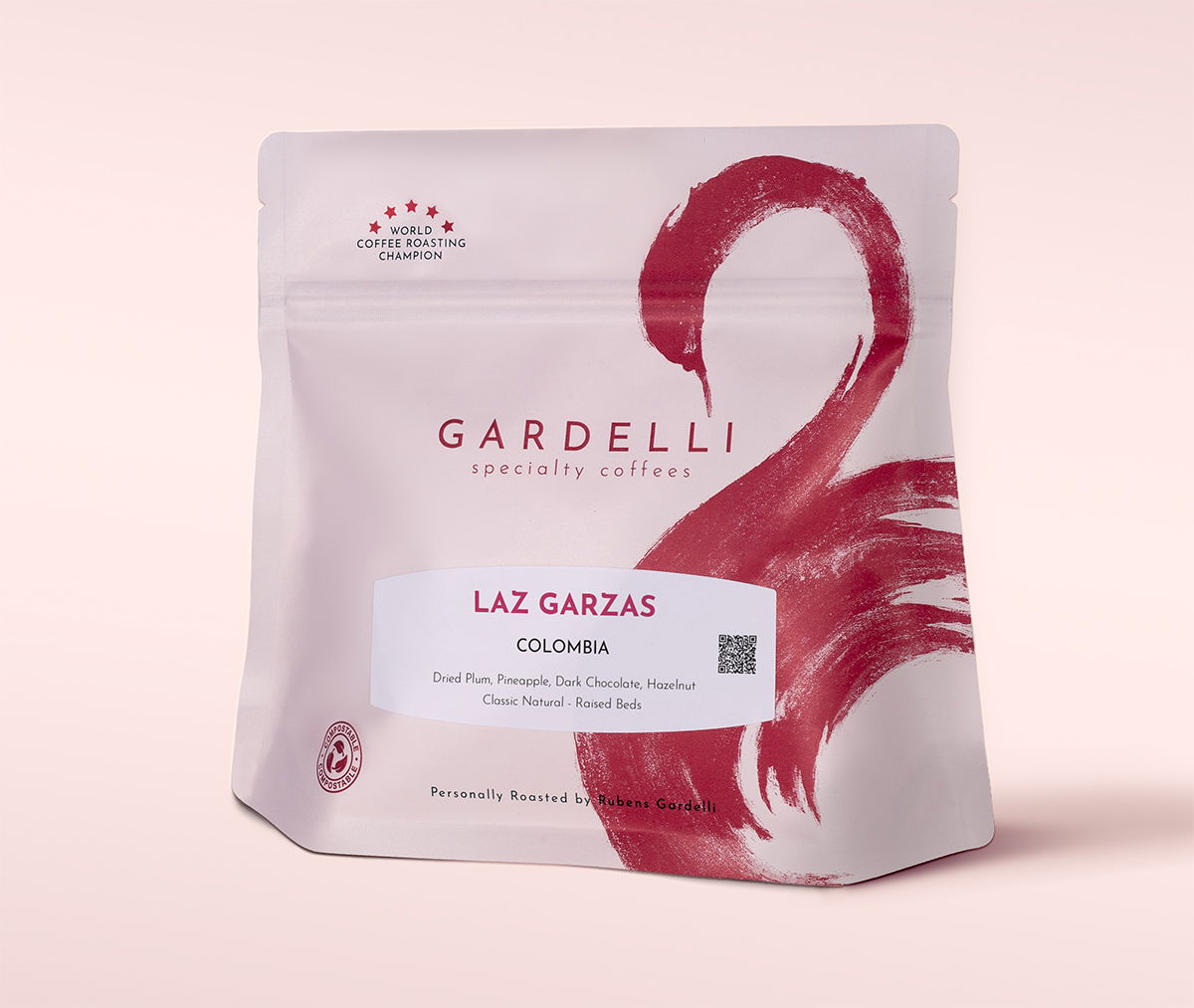







Colombia
Cup Notes: Dried Plum, Pineapple, Dark Chocolate, Hazelnut, Strawberry
Discover Las Garzas, the new Colombian coffee that encapsulates the authenticity of Tolima's lands. With its fruity and sweet notes, this natural lot offers a balanced and satisfying experience that fits perfectly into any moment of the day.
Thanks to its versatility, Las Garzas is the ideal choice to accompany you in every daily adventure.
Suggested for espresso and filter
when we roast
We freshly roast to order all coffees on Monday, Wednesday and Friday (excluding national holidays), and ship the same day! Cut-off time is 11:59pm (UTC+1) of the day before the roast day. *We only ship whole beans*
This special naturally processed lot is from Azahar Coffee Company and their partner farmers in Gaitania, in the Planadas, South Tolima. These farmers, most of whom continue a family tradition of coffee cultivation, are based at elevations up between 1,700 and 2,000 masl and grow the Colombia, Castillo and Caturra varieties.
Located 331 kilometres from the capital city of Bogotá, in the southern part of Tolima, Gaitania boasts altitudes that range from 1,400 m.a.s.l at the town center, all the way up to 5,355 masl. 50% of the Nevado de Huila is actually found in Gaitania and, as the third tallest mountain in Colombia, surpassed only by the Colón and Bolivar peaks in the Sierra Nevada of Santa Marta, this is a great source of pride as well as of water for the surrounding region.
Today, the strength of the regional economy comes from Gaitania’s coffee production, but during the pricing crisis of the 90s, many coffee farmers found themselves planting opium poppy, a crop that brought more hardship to the area. The “fever” for this crop died down after five years and the coffee producers of Gaitania returned to growing their preferred crop.

CATURRA
Caturra is a natural mutation of the Bourbon variety, discovered on a plantation in the state of Minas Gerais, Brazil, sometime between 1915 and 1918. This mutation, characterized by a single-gene causing dwarfism or compact growth, earned the variety its name, derived from the Guarani word meaning "small," also known as "Nanico."
Following the discovery of Caturra, selections were conducted by the Instituto Agronomico (IAC) of Sao Paulo State in Campinas, Brazil, starting in 1937. Breeders were particularly intrigued by Caturra's reduced size, allowing for closer plant placement, and its closely spaced secondary branches, facilitating increased fruit production within the same space. The selection process for Caturra, termed mass selection, involved choosing individuals based on superior performance, combining seeds from these plants to form a new generation, and repeating the process.
Although never officially released in Brazil, Caturra became prevalent in Central America. Introduced in Guatemala in the 1940s, widespread commercial adoption took another three decades. From Guatemala, it spread to Costa Rica, Honduras, and Panama. For many years, Caturra held significant economic importance in Central America, often serving as a benchmark against which new cultivars were tested. In Colombia, Caturra accounted for nearly half of the country's production until a government-sponsored program, starting in 2008, promoted the renovation of over three billion coffee trees with the leaf-rust-resistant Castillo variety, which has Caturra parentage.
Caturra played a role in the intensification of coffee cultivation in the region during the second half of the 20th century, marked by higher-density planting, often in full sun. Additionally, Caturra is recognized as one of the parent varieties in the so-called "Catimor" family of cultivars. Various lines of the coffee-leaf-rust-resistant Timor Hybrid were crossed with Caturra to produce a dwarf/compact plant with rust resistance.
CASTILLO
Castillo is named after the researcher Jamie Castillo, who helped Cenicafe, Colombia’s coffee research centre, develop the varietal in 2005.
Castillo was designed as an improvement on the Colombia variety. It is resistant to leaf rust (roya) and has quickly become the most planted coffee in Colombia. It is high-yield, resistant to leaf rust and other prevalent diseases and its smaller size allows for greater planting density.
COLOMBIA
Using Catimor’s HdT x Caturra recipe as a blueprint, Cenicafé first created the Colombia variety as an F5 composite, and released it in 1982.

For this natural process, the cherries are fermented for 38 hours, then dried for eight days on raised African beds under canopy.
